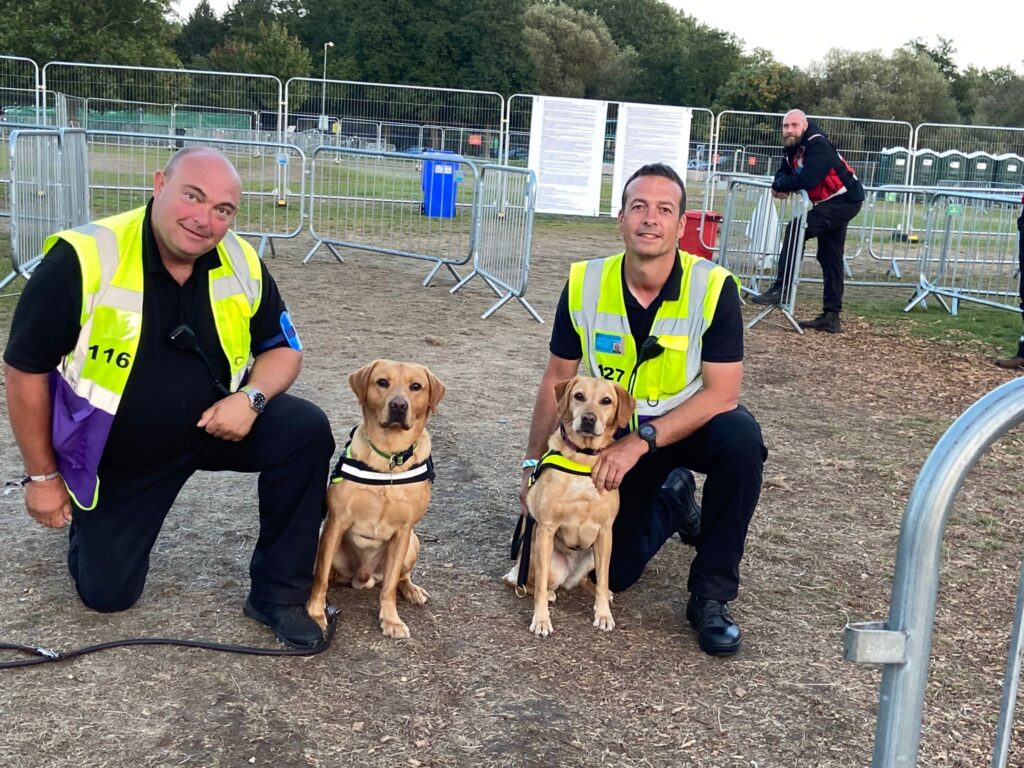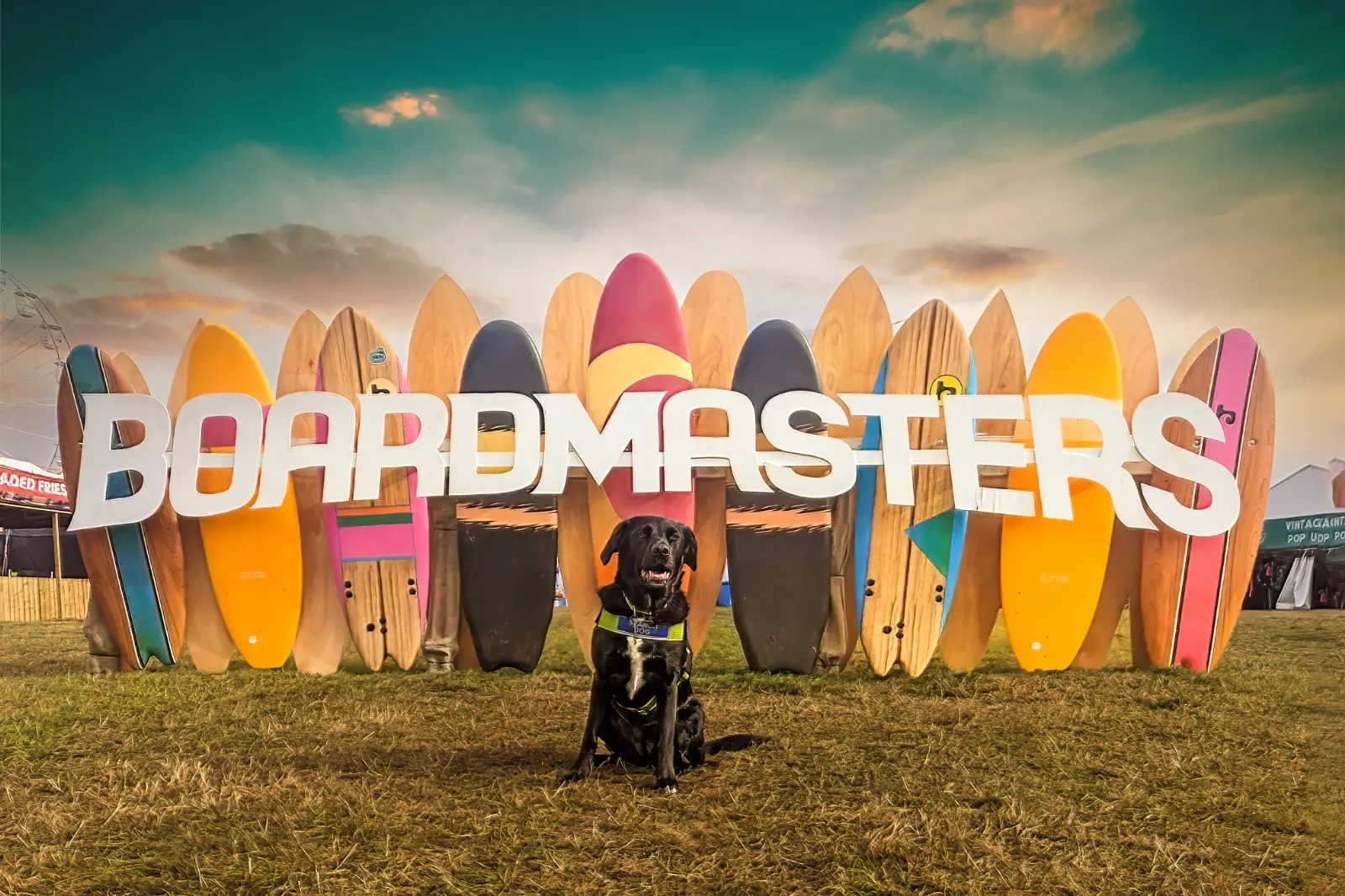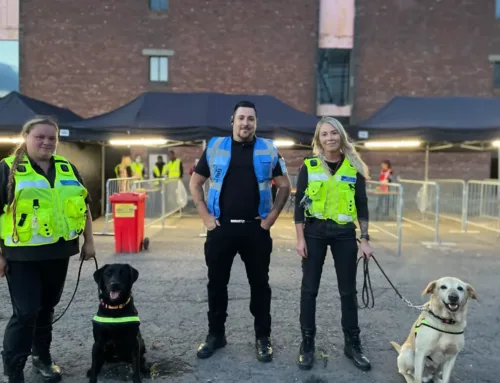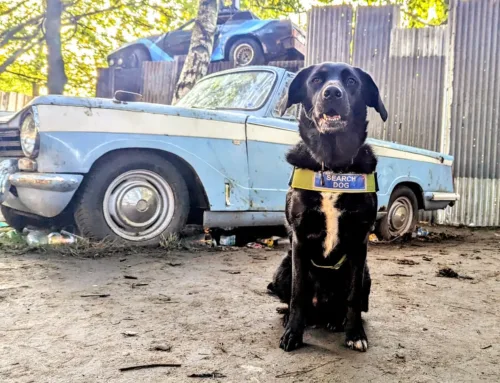Large public events, from international sports competitions to local festivals, bring together vast crowds where the safety of each attendee is paramount. These gatherings present significant security challenges that require meticulous planning and implementation of effective safety measures to ensure that everyone can enjoy the event without the concern of potential threats.
Amidst the many security solutions employed, detection dogs emerge as a critical asset in the safeguarding of these events. These canine units, with their exceptional olfactory senses, are uniquely equipped to identify and locate a variety of threats, ranging from explosives to narcotics, often undetectable by human senses or even sophisticated machinery.
The efficacy of detection dogs is underscored by numerous success stories where their keen noses have detected dangers before they could escalate into tragedies.
The Critical Role of Detection Dogs
Detection dogs serve as one of the most effective tools in the security toolkit, particularly during large-scale events where the risk of contraband such as pyrotechnics or harmful substances is raised. These canine companions have the innate ability to sniff out a wide range of threats, from explosives to illegal drugs, thanks to their highly developed sense of smell which is vastly superior to that of humans. This sensory capability, along with their ability to detect minor changes in body language and non-verbal cues, is the cornerstone of their utility in detecting danger, allowing for swift responses to potential security breaches.
The proficiency of detection dogs is not just a product of their natural talents but also of rigorous and specialised training. From a young age, these dogs are taught to recognise specific scents associated with various threats or substances. The training methods are carefully designed to promote accuracy, reliability, and the ability to work in the chaotic environments that characterise public events. The training also ensures that the dogs can operate effectively without becoming over-stimulated or distracted by large crowds and noise.
An often under-appreciated aspect of a detection dog’s efficacy is the relationship with its handler. The bond between dog and handler is built on trust, mutual respect, and communication, creating a synergistic team that is adept at navigating complex security operations. Handlers are trained to read their canine partners’ signals and cues, enabling them to act swiftly upon a dog’s alert. This partnership is pivotal and ensures that the dogs’ skills are optimally employed to maintain the safety and security of public events.
The Synergy Between Canines and Technology
In the world of event security, the meeting of canine instinct and advanced technology creates a formidable barrier against threats. Technology complements the work of detection dogs by extending their sensory capabilities and providing a secondary confirmation of potential dangers. For instance, when a dog alerts to a suspicious item, bomb disposal units may use robotic devices equipped with cameras and sensors to inspect and, if necessary, neutralise the threat from a safe distance.
Several tools have been developed to integrate smoothly with canine capabilities, enhancing their overall effectiveness. Wearable technologies for dogs, such as GPS trackers and biometric vests, monitor their location and vital signs, ensuring their well-being during operations. Portable gas chromatography-mass spectrometry (GC-MS) devices can analyse and confirm substances that dogs detect, providing immediate, on-site verification of the canine’s findings.
This synergy between man, machine and canine, maximises the efficiency and effectiveness of security protocols in several ways. It allows for rapid, real-time decision-making and response, which is crucial in high-stakes situations where every second counts. Additionally, the use of technology as a supplementary measure increases the accuracy of threat detection, reducing the likelihood of false positives and ensuring that security resources are allocated appropriately. By working together, canines and technology not only fortify each other’s strengths but also create a more robust security infrastructure capable of protecting the public during large gatherings and events.

Training and Preparedness
Detection dogs are put through an extensive and rigorous training regimen from a young age, designed to hone their innate capabilities. Starting with fundamental obedience, their education extends to identifying the particular scents of both common and emerging threats. This includes exposure to bustling crowds and loud noises, conditions typical of large-scale events, to ensure the dogs perform optimally without distraction.
The journey to becoming a certified detection dog is ongoing, with continuous training to maintain and enhance their skillset. Regular sessions keep the dogs current with the latest security challenges and refresh their knowledge. These exercises are critical not only for the dogs’ performance but also for reinforcing the working relationship between handlers and their canine partners. Evaluations are conducted to affirm the dogs’ alertness and accuracy, ensuring readiness for active duty.
For a security operation to be truly effective, the sharp instincts of detection dogs must be matched by the vigilance and protocol-driven actions of the human security team. Handlers and security officers must be ever-watchful, interpreting the dogs’ signals accurately and responding without delay. This seamless combination of canine detection and human response underpins a successful security strategy, one that keeps the safety of public events at the forefront.
Conclusion
In conclusion, detection dogs serve an indispensable role in ensuring the safety of public events. Their acute senses and specialised training make them one of the most reliable resources in identifying potential threats amid large crowds and busy venues. Detection dogs act as a proactive line of defence, often preventing incidents before they occur through their ability to pick up on scents imperceptible to humans.
However, as effective as these canine partners are, they represent just one facet of a comprehensive security approach. Integrating their expertise with vigilant public participation, advanced technology, and the unwavering dedication of security personnel creates a robust, multi-layered defence against potential threats. This synergy is what makes event security truly resilient.
Looking ahead, as the security landscape continues to evolve with new challenges and sophisticated threats, the role of detection dogs will remain a cornerstone of effective security strategies. Their adaptability, combined with ongoing training and advances in handling methods, ensures that detection dogs will continue to be invaluable assets in our collective efforts to maintain safety and peace of mind at public gatherings.
If you think your business, organisation, event or venue could benefit from the added security and reassurance that a canine team would provide, then don’t hesitate to get in touch! We’re always happy to help.




